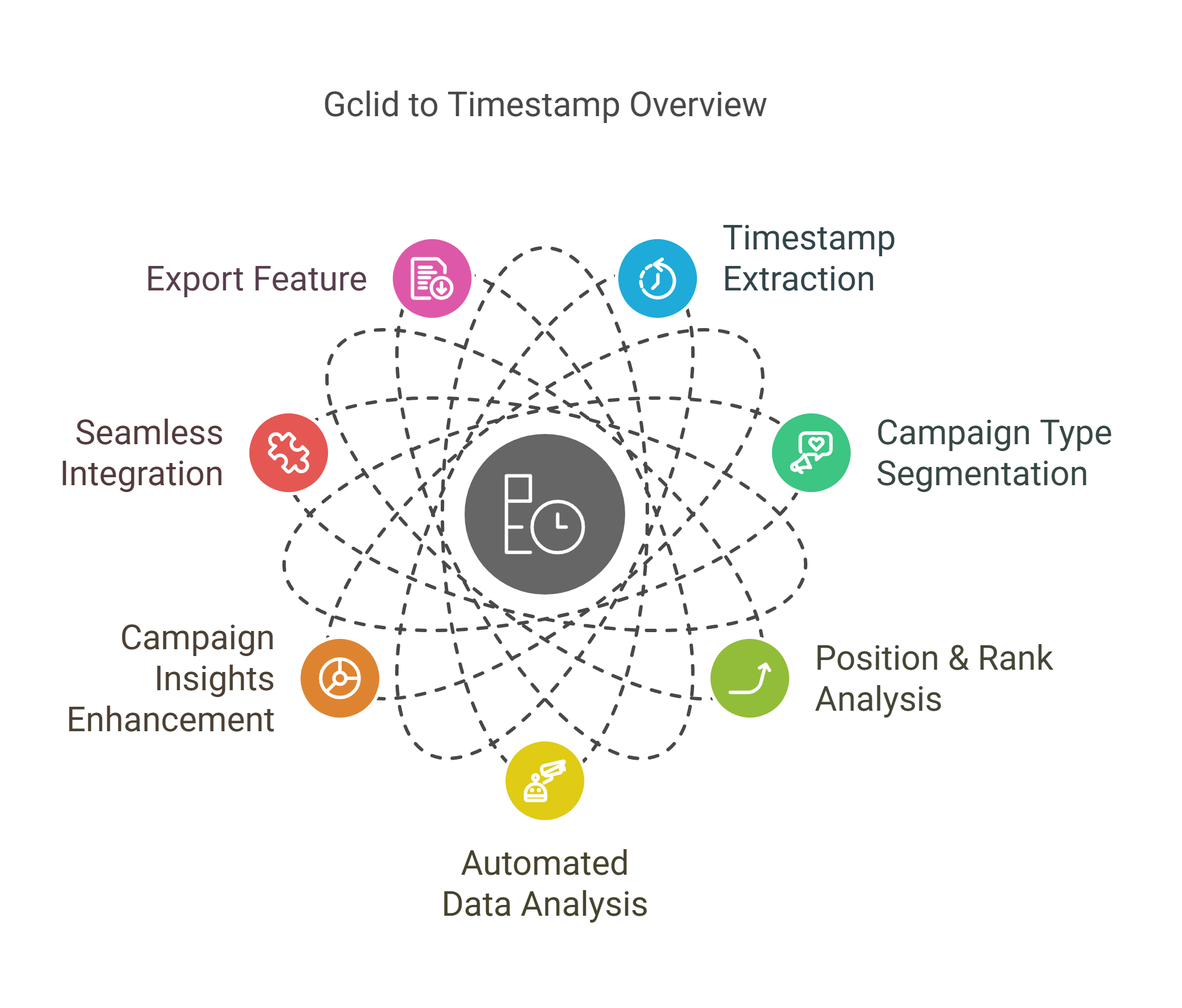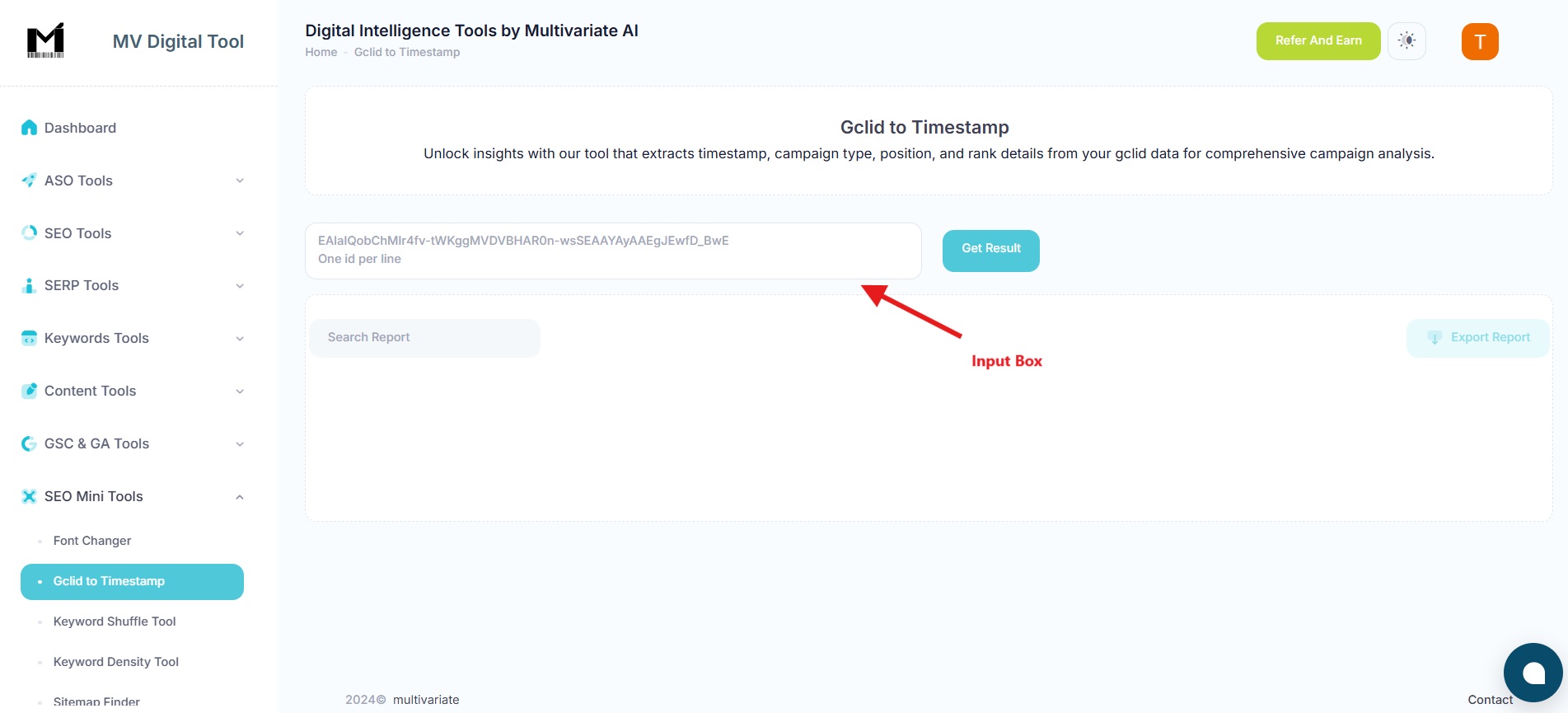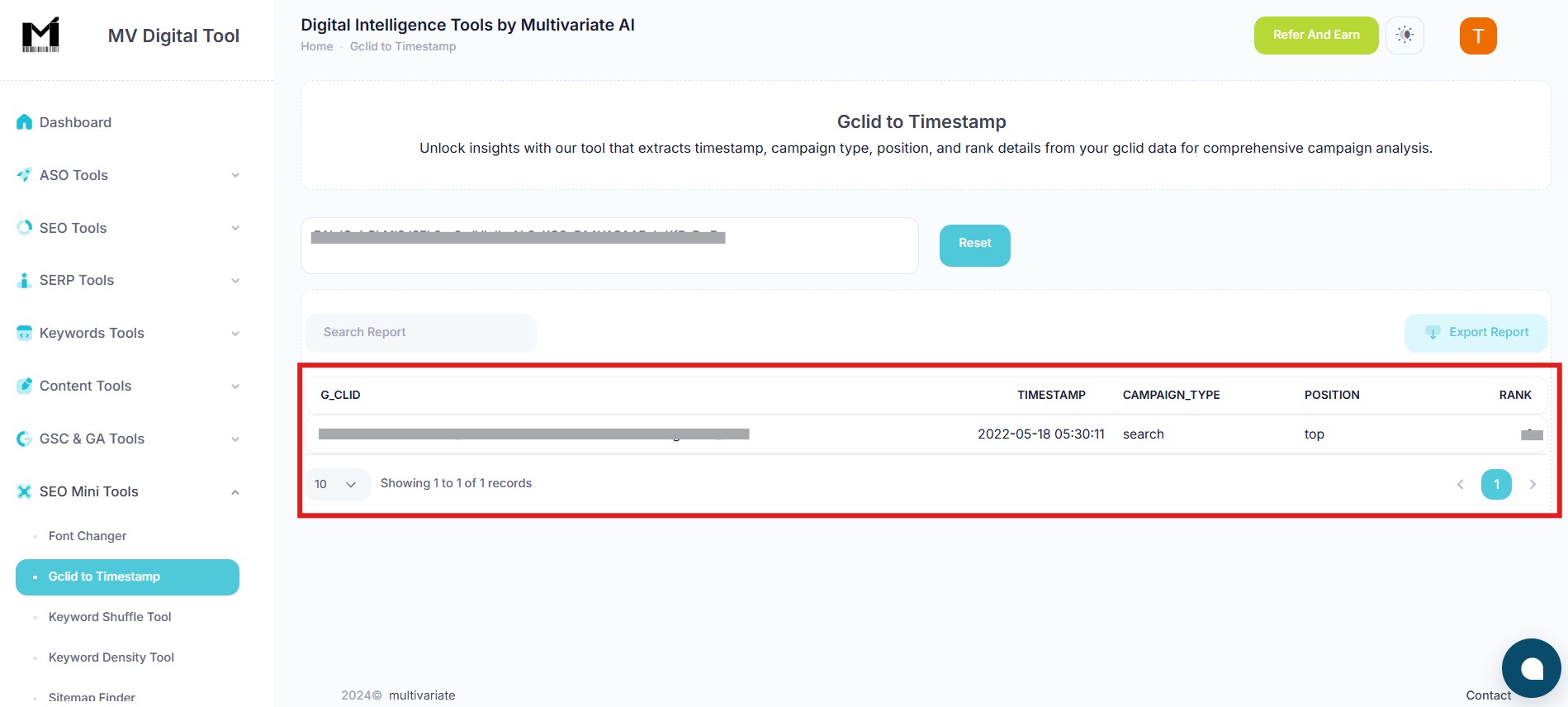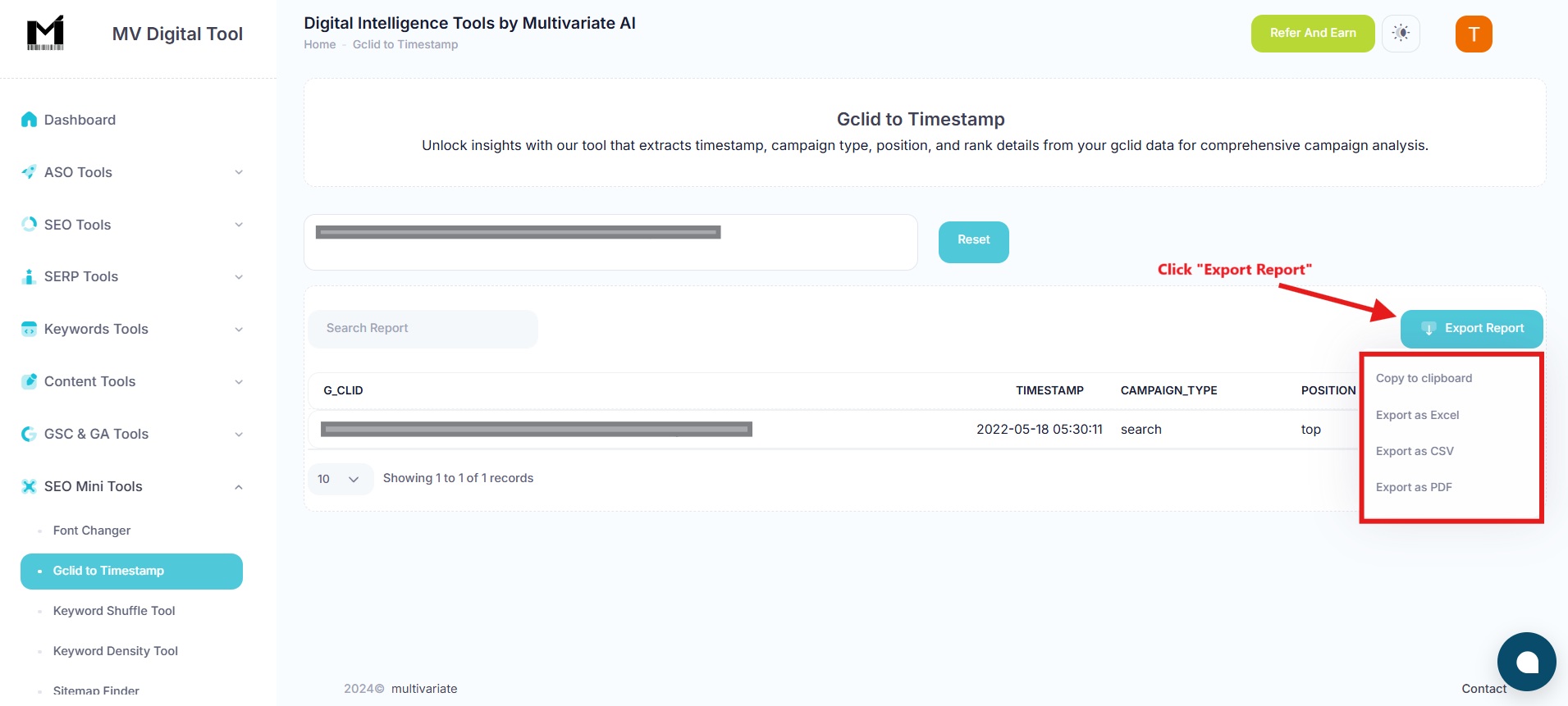In the world of digital marketing, understanding the performance of paid campaigns is crucial. Google Click Identifier (Gclid) plays a key role in tracking ad clicks, but extracting meaningful insights from it can be challenging. That’s where Gclid to Timestamp, a tool by Multivariate.tech, simplifies the process. It helps marketers decode their Gclid data, unlocking timestamps, campaign types, positions, and ranks for in-depth Ads analysis. This tool is essential for advertisers, agencies, and SEO professionals looking to refine their paid strategies and optimize ad performance.
Gclid to Timestamp is an advanced tool designed to decode Gclid data from Google Ads. It extracts key details such as:
The tool is particularly beneficial for advertisers, digital marketers, and agencies who rely on data-driven strategies to track and optimize their Google Ads performance.

Using the Multivariate's Gclid to Timestamp Tool is straightforward, even for beginners. Here’s a quick step-by-step guide:

3. Select "Gclid to Timestamp". Enter the Gclid text into the blank dashboard.

4. Click on the “Get Result” button to extract timestamp, campaign type, rank, and position details.

5. Review the results displayed instantly on your dashboard.

6.Click "Export Report", then choose the desired format to download the results

The Gclid to Timestamp Tool is highly useful across industries, including
SEO professionals, digital marketers, and Google Ads specialists who need deep insights into ad campaign performance.
It provides detailed timestamp, campaign type, and rank insights—features that are often missing in standard Google Ads reports.
Check Multivariate.tech for any available free trials or demo versions.
Regularly, especially when analyzing Google Ads performance and optimizing campaign strategies.
Conclusion:
Gclid to Timestamp is an essential tool for SEO professionals and advertisers aiming to optimize their Google Ads campaigns. By extracting timestamp and ranking details, it provides a competitive edge in campaign performance analysis. Try it today with Multivariate.tech to enhance your ad strategies and maximize conversions.
Optimize Your Google Ads Strategy — Try the Multivariate's Gclid to Timestamp tool Now!